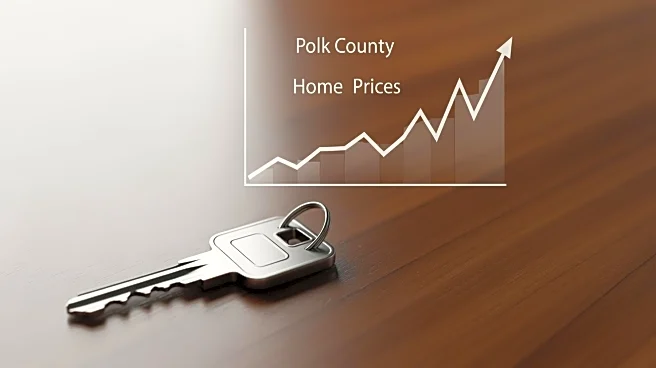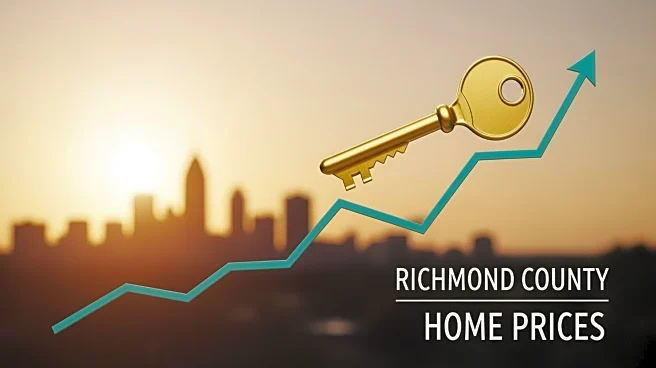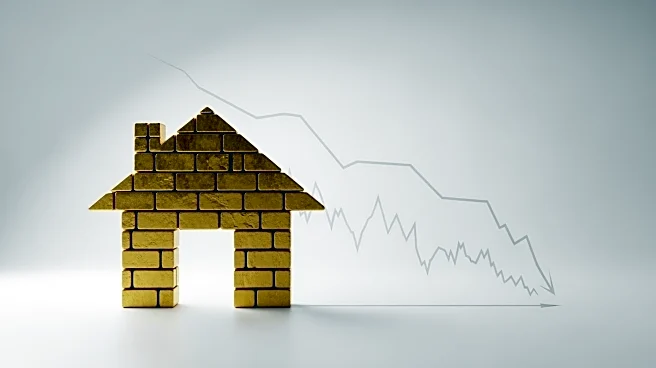What's Happening?
In the third quarter of 2025, the typical down payment for homebuyers remained relatively flat at $30,400, according to Realtor.com. This figure represents a modest increase of $500 from the previous quarter and is nearly unchanged from the same period
last year. The average down payment share was approximately 14.4% of the purchase price. Despite easing mortgage rates into the low 6% range, high home prices and limited inventory continue to challenge affordability, keeping many potential buyers on the sidelines. The market has seen a shift towards higher-income buyers, with sales of homes priced above $750,000 rising nearly 6% year-over-year, while lower-priced sales declined by about 3%. Regional differences were noted, with the Northeast showing the highest down payment share at 18.2%.
Why It's Important?
The steady down payment levels reflect ongoing challenges in the housing market, where elevated prices and borrowing costs limit affordability for many buyers. This situation favors financially strong buyers who can navigate higher prices and tighter lending standards. The typical homebuyer FICO score remains high at 735, indicating that the market continues to favor those with strong financial profiles. The concentration of homebuying among higher-income households could exacerbate existing inequalities in housing access, as entry-level home sales lag behind. Regional disparities in down payment percentages highlight uneven market conditions, with the Northeast experiencing the largest increases in both down payment share and dollar amount since 2019.
What's Next?
As mortgage rates edge lower, there is potential for more variety in who can afford to buy homes, which could lead to smaller down payments. However, unless inventory grows significantly, renewed competition could drive prices and down payments higher again. The market dynamics suggest that financially strong buyers will continue to dominate, potentially leading to further shifts in the types of homes being sold and the demographics of buyers. Monitoring changes in mortgage rates and inventory levels will be crucial in understanding future trends in the housing market.
Beyond the Headlines
The current housing market conditions raise ethical and social concerns about accessibility and affordability. The concentration of homebuying among higher-income households may contribute to widening economic disparities and limit opportunities for first-time buyers and those with lower incomes. Additionally, the regional imbalances in down payment percentages reflect broader issues of housing supply and demand, which could influence long-term urban planning and development strategies.













